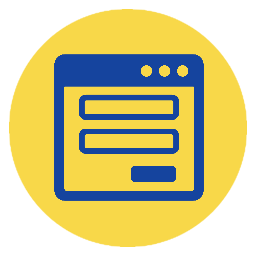Types of educational measurement are an important tool that helps professors assess students’ learning objectives and performance. By knowing the different types of educational measurement, professors can ensure more accurate performance measurements and improve learning results.
From formative measurement methods to performance analysis tools, each types of educational measurement serves a defined purpose in enhancing student performance.
Here’s Qorrect, a powerful educational assessment platform, streamlines the types of measurement in assessment to support better data-driven decisions in universities.
How Qorrect Platform supports types of educational measurement.!!
Table of Contents
What Is Educational Measurement?
Educational measurement means a systematic process of gathering, analyzing, and interpreting data related to student performance. Educational measurement is a main step of effective teaching and curriculum enhancement, which helps professors determine if educational objectives have been achieved. The process of measurement involves the use of various tools, techniques, and equipment.
If the types of educational measurement used to monitor student progress, enhance instruction, or support academic decisions, educational measurement that ensures that teaching methods agree with student needs.
With Qorrect platform, educational institutions can digitize and automate all types of educational measurement processes and offer secure, accurate, and data-driven insights to support student performance. Qorrect platform also simplifies how professors measure learning and track improvement in real-time.
Key Types of Educational Measurement Explained
Understanding the different types of educational measurement is the cornerstone of accurate evaluation of students’ academic performance and learning outputs. Each types of educational measurement covers a special purpose and is applied depending on the educational goals.
The Key types of educational measurement:
Formative Assessments: providing outstanding feedback to guide students’ learning during the course.
- Summative Assessments: Evaluate student performance at the end of an educational program.
- Diagnostic Assessments: Identify students’ essential knowledge, strengths and weaknesses, and skills before instruction begins.
- Performance-Based Assessments: Require students to complete tasks that show their understanding.
- Self and Peer Assessments: Encourage reflection and collaborative evaluation among students.
- Norm-referenced assessment: Compares a student’s performance to that of peers.
- Criterion-Referenced Assessment: Measures a student’s performance against a specific set of learning objectives.
- Ipsative Assessment: Compares a student’s current performance with their previous results to track growth.
With Qorrect platform, professors can design and publish all types of educational measurement digitally. Qorrect platform provides tools for creating various question formats, real-time analysis, and automated grading. If your educational institution needs to deliver a quick formative quiz or a complex performance-based assessment, Qorrect supports the process while ensuring data accuracy and integrity.
read about this: Different Types of Assessments in Education Explained 2025
What Is an Example of Educational Measurement?
Assessment measures examples are standardized math exams used at the end of the term to assess if students have mastered specific algebra skills. The results from this test offer meaningful data that help professors evaluate student achievement.
Other Common examples of educational measurement:
- Multiple-choice tests.
- Essays and written assignments.
- Science lab reports.
- Oral presentations.
- Performance-based tasks.
All of these types of educational measurement serve a specific purpose in the learning process. With Qorrect, professors can build and manage all these assessment formats from one integrated platform. Qorrect also turns types of educational measurements into a strategic, efficient, and meaningful process supported by data.
How to Choose the Right Measurement Tool?
Choosing the right educational measurement tool depends on your educational goals, the subject, and the type of learning. Not all educational measurement tools are created equal, so making the correct choice is key to accurately assessing student performance and achieving better learning results. Selecting the appropriate educational tool is essential for obtaining accurate, meaningful insights into student learning. The right choice depends on several factors that align with teaching goals and assessment strategy.
Here are the key factors to choose the right measurement:
- Purpose of assessment.
- Type of learning outcome.
- Student level and educational background.
- Assessment formats.
- Data usability.
With Qorrect platform offers a smart question bank supported by AI and classified by Bloom’s taxonomy, pre-built templates for different measurement purposes, real-time reports to measure student progress and educational gaps.
read about this: Types of online examination system for Universities
How Are Educational Measurements Analyzed?
Educational measurement analysis involves interpreting data gathered from all assessments to understand student performance, progress, and learning gaps. The analysis process transforms raw data into meaningful insights that enhance teaching strategies and curriculum enhancement.
The key analysis methods include:
- Quantitative analysis: Uses statistical tools to evaluate test scores, averages, distributions, and trends.
- Qualitative analysis: Interprets open-ended responses, projects outcomes to assess deeper learning.
- Comparative analysis: Compare current performance with past data or peer groups.
- Item analysis: Evaluates the quality and effectiveness of individual questions in a test.
- Standards alignment: Ensures that assessment results are linked to learning outputs.
With Qorrect platform, educational institutions move far from basic grading to achieve advanced strategic analysis that enhances learning outputs and supports improvement.
How Does Qorrect Support Educational Measurement Practices?
Qorrect is more than an assessment platform; it’s a comprehensive, cutting-edge solution designed to enhance all steps of educational measurement. From designing assessments to analyzing results, Qorrect platform ensures that educational institutions can evaluate learning outputs effectively, accurately, and in alignment with academic goals.
Here’s how Qorrect empowers educational measurement:
- Diverse question types for different measurement needs.
- Direct mapping to learning outcomes.
- Formative and summative assessment tools.
- Real-time feedback and performance measurement.
- Built-in rubrics and standardization.
- Data-driven decision making.

By integrating Qorrect platform into your educational institutions, you gain a powerful tool that aligns with modern assessment standards and enhances ongoing enhancement in teaching and learning results.
Don’t miss the chance to be part of Qorrect’s educational community.
FAQs
1- What are the characteristics of educational measurement?
Educational measurement is defined by several key characteristics: Objectivity, Reliability, Validity, Fairness, and Alignment.
2- How can we measure student progress effectively?
Measuring student progress involves a combination of qualitative and quantitative assessment methods, such as formative assessments, Summative assessments, Performance tasks, and Learning analytics
3- What tools are used for educational measurement?
Some commonly used tools for educational measurement include: Standardized tests, Rubrics for performance-based tasks, Learning Management Systems (LMS), and Online assessment platforms
4- What challenges face educational measurement in universities?
Universities often face several challenges, including: Subjectivity in grading, Lack of alignment, Limited feedback, Technological gaps, and Data fragmentation.
 Qorrect Blog
Qorrect Blog







